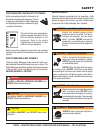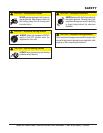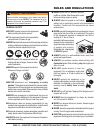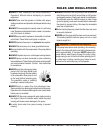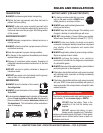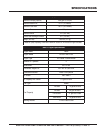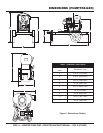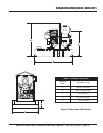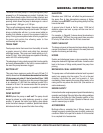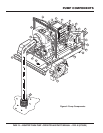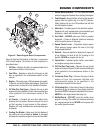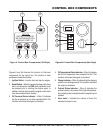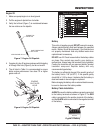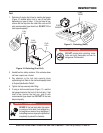
PAGE 16 — MQ62TDD TRASH PUMP • OPERATION AND PARTS MANUAL — REV. #0 (07/30/09)
GENERAL INFORMATION
The MQ62TDD trash pump is a self-priming trash pump
powered by a 29 horsepower air-cooled, 2-cylinder, four
stroke Deutz diesel engine. Both the intake (suction) and
discharge ports on the pump incorporate a 6-inch diameter
opening, which allows the pump to discharge at a rate of
approximately 1,083 gpm or 4,100 lpm.
This is a self-priming pump design, the pump casing must
be filled with water before the pump can be used. The engine
drives a rotating disc with two ( or more vanes) called an
impeller that creates an area of low pressure inside the
pump. Priming is accomplished when all air is purged from
the pump and suction line allowing water to flow
continuously into the pump.
TRASH PUMP
Trash pumps derive their name from their ability to handle
a greater amount of debris and solids than standard
centrifugal pumps. This pump can handle solids up to 2-
inches (51 mm). Also trash pumps are capable of handling
water with 25% solids by weight.
The advantage of using a trash pump is that it can be quickly
and easily disassembled in the field to remove debris in
the event the pump becomes clogged.
SUCTION LIFT
This pump has a maximum suction lifts up to 25 feet (7.6
meters) at sea level.
At elevations above sea level suction
lift decreases at a rate of 1 foot of suction lift per 1,000
feet of elevation.
Therefore, when this pump is being used
at an elevation of 5,000 feet the maximum suction lift is
reduced to 20 feet. It is recommended that the pump be
located as close to the source as possible to minimize
suction lift.
PUMP SUPPORT
NEVER place the pump on
soft soil
. The pump should
always be placed on solid stationary ground in a level
position. To prevent the trailer from tipping, place blocks
under the trailer's bumper. In addition, place chock blocks
behind each wheel to prevent the trailer from rolling.
ELEVATION
Elevations over 3,000 feet will effect the performance of
the pump. Due to less atmospheric pressure at higher
altitudes, pumps DO NOT have the priming ability that they
have at sea level.
A general rule of thumb is that for every 1,000 feet of
elevation above sea level a pump will lose one foot of
priming ability.
For example, in Flagstaff, Arizona where the elevation is
approximately 7,000 feet, the pump would have a suction
lift of only 18 feet rather than the 25 feet at sea level.
PUMP CLEAN-OUT
The clean-out cover on the pump has been design for easy
removal that allows for easy access to the wear plate and
impeller for cleaning and servicing.
HOSES
Suction and discharges hoses or pipe connection should
always be checked for tightness and leaks. A small suction
leak in the hose or fittings could prevent the pump from
priming.
MECHANICAL SEAL LUBRICATION
The pump uses a oil lubricated mechanical seal to prevent
water from seeping into the engine. The oil in the seal
chamber lubricates the seal and prevents it from
overheating. Never operate the pump without water in the
casing as this may cause the seal to fail. (See section on
seal maintenance).
ENGINE SAFETY
Internal combustion engines present special hazards during
operation and fueling! Failure to follow the safety guidelines
described in the Rules for Safe Operation section of this
manual and the Deutz Engine Operator's Manual could
result in severe injury or death.
ACCESSORIES
Multiquip offers a complete line of fittings, hoses, and
clamps to properly connect the pump to match various job
conditions. Refer to the part list in section 2 of this manual
for a complete list of accessories



